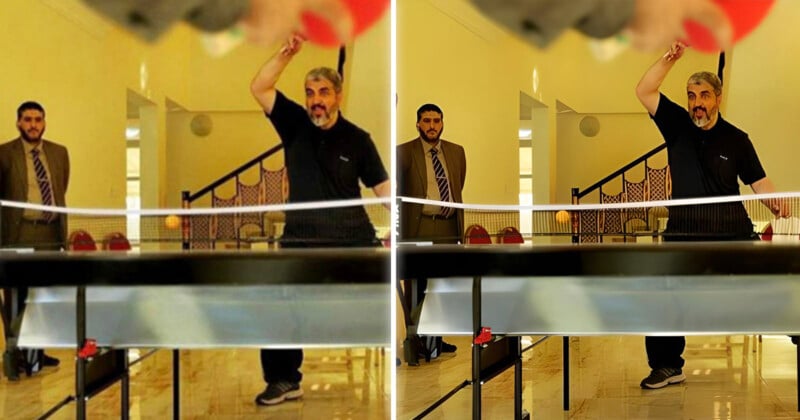‘AI Images’ of Hamas Leaders ‘Living in Luxury’ Are Actually Upscaled

Photos showing leaders of Hamas “living luxurious lives” that were accused of being AI-generated were actually upscaled with artificial intelligence (AI) technology.
The images were posted to X (formerly Twitter) on Friday where they went viral but were quickly accused of being AI-generated.
And the images do show telltale signs of AI: distorted faces, and hands. However, the low-resolution images were run through an upscaler which gives a similar effect. Furthermore, the photos were taken almost a decade ago in 2014.
Anyone who has ever tried to upscale a very low-resolution image will know that it is difficult to get a quality, high-resolution image out of it that looks real.

But it once again underlines the problems of authenticating real images as AI imaging technology is increasingly omnipresent.
Hananya Naftali, an Israeli media personality, tweeted out the images.
“Dear Palestinians, While the leaders of Hamas are living luxurious lives enjoying good lives, they ask you to sacrifice yourselves and your children,” Naftali wrote in the provocative tweet.

The images purport to show Hamas leaders onboard a private jet, playing table tennis, and eating good food.
In an interview with Forbes, Naftali confirmed that he had taken the images from a 2014 Ynetnews article.
“I took the images from this 2014 article by Ynetnews. The images were also aired on television back then. Since the images are low quality, I increased the resolution but did not apply any digital filter to them,” Naftali said to Forbes this weekend.
X’s Community Notes has since slapped an explainer on Naftali’s tweet.
“While the images *are* real, and have merely been AI-enhanced (NOT AI-generated), the images shown are from (at least) 9 years ago, in 2014,” it writes.
“Argument to be made that post is misleading due to being out of date/age of images, and is presented by Naftali as being current.”
Matt Novak of Forbes says that it’s “easy to see why people thought they were AI.”
This is because when a picture editor wants to upscale low-resolution images, to reach a higher pixel count the AI upscaler extrapolates the missing data. Sometimes it does this well but other times it can produce muddled pictures.
Image credits: Ynetnews.com